#Sir Charles George Douglas Roberts
Explore tagged Tumblr posts
Text

Life and Art
By Sir Charles George Douglas Roberts
Said Life to Art - "I love thee best Not when I find in thee My very face and form, expressed With dull fidelity, "But when in thee my craving eyes Behold continually The mystery of my memories And all I long to be."
Painting • Sunflowers • Claude Monet
#poetry#life and art#sir charles george douglas roberts#sunflowers#post impressionism#claude monet#nature#flowers#french painter#european art#oil on canvas
15 notes
·
View notes
Text

Sir Charles George Douglas Roberts // "In September"
#poetry#Sir Charles George Douglas Roberts#Sir Charles you have too many names#please pick two#September#autumn#tishrei
4 notes
·
View notes
Text

@tcmparty live tweet schedule for the week beginning Monday, January 16, 2023. Look for us on Twitter…watch and tweet along…remember to add #TCMParty to your tweets so everyone can find them :) All times are Eastern.
Friday, Jan. 20 at 8:00 p.m.
LURED (1947)
A taxi dancer helps the police catch the serial killer who murdered her best friend.
#schedule#personal column#douglas sirk#lucille ball#george sanders#charles coburn#boris karloff#sir cecil hardwicke#joseph calleia#alan mowbray#george zucco#robert coote#alan napier#tanis chandler
15 notes
·
View notes
Text




On November 20th 1776 William Blackwood, the noted Scottish publisher and bookseller was born in Edinburgh.
At the age of fourteen began a six year apprenticeship to the booksellers Bell & Bradfute. Following further training in Glasgow and London, he opened his first shop on Edinburgh. Specialising in selling rare books the business was a success. In 1813 Blackwood became the agent for the printers of Sir Walter Scott’s novels.
Four years later he founded the ‘Edinburgh Monthly Magazine’, later called Blackwood’s Edinburgh Magazine, and from 1905 called Blackwood’s Magazine. Established as a counterweight to the Edinburgh Review, it quickly gained notoriety with its satire on the Edinburgh Whigs and attacks on the Cockney school of poets, it also gained circulation by publishing stories, poems, and serialised novels. Later the magazine became less controversial and exercised a wide and steady literary influence. Scott, James Hogg, and Thomas De Quincey were among its early contributors.
Blackwood was succeeded by his sons Alexander (1806–45), Robert and John. They added a London office to the business in 1840 and an Edinburgh printing office in 1847. After them the conduct of the firm passed, in turn, to William Blackwood , George Blackwood (1876–1942), James Blackwood), and George Douglas Blackwood , great-great-grandson of the founder.
After the mid-19th century, the magazine published serially and then in book form works by George Eliot, Edward Bulwer-Lytton, Charles Lever, Anthony Trollope, and Joseph Conrad.
William Blackwood died in 1834 and is buried in an ornate vault in the lower western section of Old Calton Cemetery.
6 notes
·
View notes
Text
Traditional Scots Bonnet
I write ✍️ in response to the message.
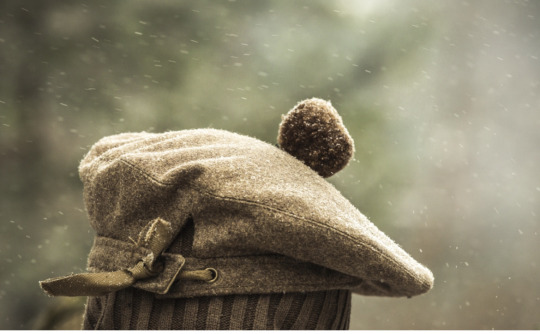
The Blue Bonnets of 16th Century Scotland
The traditional Light Blue Scots Bonnet or Bluebonnet (originally bonaid in Gaelic) from the 16th to the 18th century was the customary working wear of Scottish labourers and farmers. Although a particularly broad and flat form was associated with the Scottish Lowlands, where it was called "scone cap". The popularity of this hat spread into the Highlands was adopted by 1700. At this time, people knew Highlanders by the thick, blue or grey, wool bonnets they wore.
This blue bonnet was also associated with Jacobitism. There is even a Jacobite song called “Blue Bonnets Over the Border”, written down by Sir Walter Scott.

It’s the period that the Outlander series is set in, so this hat likely tried to inspire the Scots bonnets worn in the series.
These hats come with the white cockade symbol. When Prince Charles Edward Stuart arrive at Glenfinnan in 1745 he picked a white rose and placed it on his hat, hence the white cockade became the sign of the Jacobite supporters of his rebellion. There are several Scottish variants of the beret, notably the Scottish bonnet or Bluebonnet, whose ribbon cockade and feathers identify the wearer’s clan and rank.
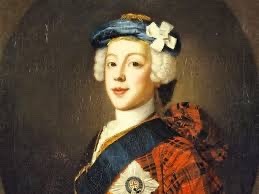
As seen above, the only Jacobite known to have worn a velvet bonnet before and during the ’45 was Prince Charles Edward. Even Lord George Murray, Prince Charles Edward’s main commander wore a woollen bonnet. Prince Charles Edward was only depicted wearing velvet blue bonnets, so it is not surprising that this bonnet was made from fabric & not knitted; this arguably was a symbol of status, something which set him apart from his men.
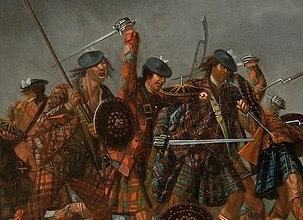
Scots Hat Types
Inspired by the hats traditionally worn by Scotsmen in the 16th to 18th centuries, Scots Bonnets, or Tam O’Shanters, were an integral part of a Scotsman’s attire. In the 18th century, the Scots Bonnet was the main item of clothing used to identify a Scotsman, even more so than tartan.
The Scots bonnet has been around since the early 16th century and has grown into several variations from the Balmoral bonnet, Glengarry hat, to the Tam O' Shanter cap. Being worn through wars on traditional uniforms for hundreds of years, the Scottish bonnet is a recognisable staple to most Scotsmen.
The Scottish hat, although named from Burn’s poem, existed long before. The flat bonnet was seen throughout Scotland from the late 1500s through the 1800s. It was similar to the common European hat but with a pom ( a “toorie”) on the top centre. Before the availability of synthetic dyes, the dye for wool for the hats came from plants and colors abundant in the region. The often-used indigo dye gives way to the name blue bonnet.
This hat is named after the hero in a Robert Burns poem. Robert Burns, arguably the most famous Scottish poet, often wrote about his surroundings and incorporated the elements and people into his great works. He was born near the town of Ayr and became friends with a farmer Douglas Graham of Shanter Farms, nicknamed Tam o’ Shanter. (Tam for the boy is often used and Shanter for his farm).
The 1790 Burn’s poem speaks of Tam, who, after a night of pub drinking, rides his grey mare Meg home during a frightful storm. While passing the haunted church (kirk), he encountered dancing witches and warlocks. As he stood in fear, the apparitions took notice of Tam.
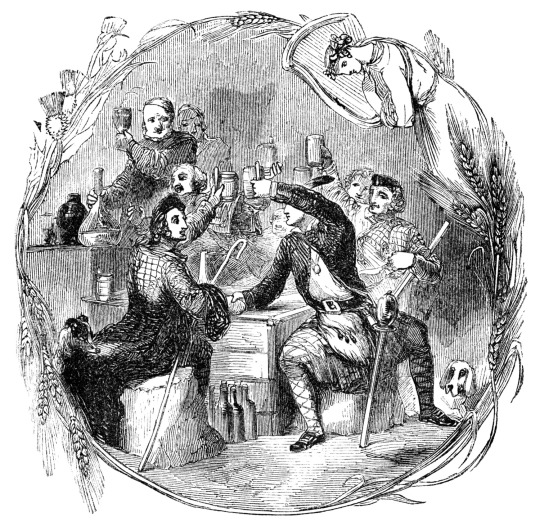
An old etched illustration of a Burns Night celebration.
The Tam O’ Shanter Inn is now a museum in Ayr. Tam and Burns would spend their days and nights in the small pub room, drinking and conversing, At this Inn, a series of paintings capture Tam’s ride depicted in Burn’s poem. On Tam’s head is a Scottish lowland bonnet that is woollen, flat, round, and blue with a pom on top. The Scottish hat, in its many forms, then became known as a Tam o’ Shanter, or simply, a tam hat.
There are several Scottish variants of the beret, notably the Scottish bonnet or Bluebonnet. In later years it came to be associated with Highland dress, and in the 19th century gave rise to other types of largely military headgear such as the more elaborate Balmoral bonnet, the tam o' shanter, (with the addition of a wire cage) the military feather bonnet.
“Scottish bonnet”. This term was used by The Earl Of Galloway, The Earl Of Morley, The Duke Of Richmond and Gordon, The Marquess Of Lothian and Lord Waveny during a debate in the House Of Lords (Army-Dress Of The Army—The Ostrich Feather Head-Dress Of The Highland Regiments) February 1884.
The bluebonnet can be traced back to 15th-century Scotland. From this point on other native Scottish headwear derived from the blue bonnet. The cap is now known as a modern classic, but it's lived through hundreds of years. The three main types of traditional Scottish bonnet hats are Glengarry, Balmoral, and Tam O' Shanter.
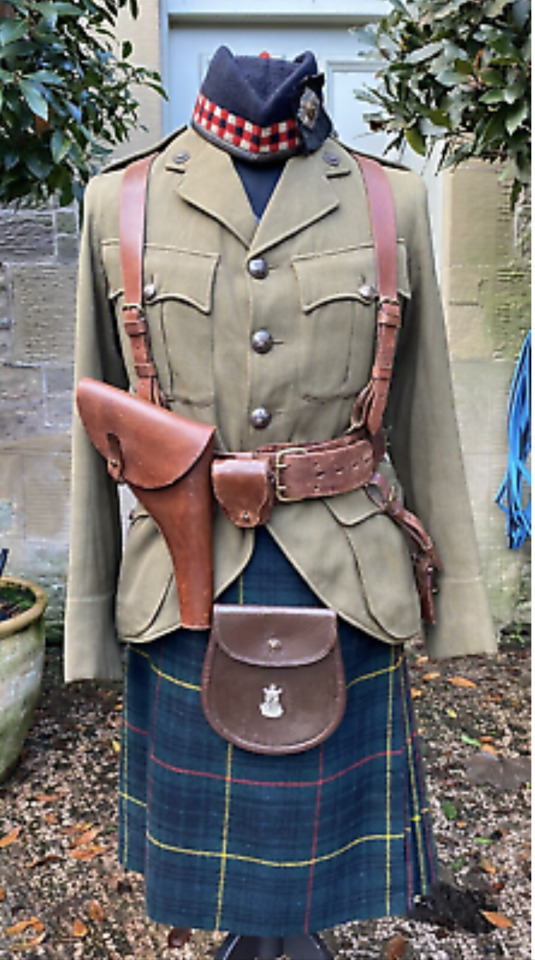
Original & Complete WW1 Scottish Officer's 1917 9th Royal Scots kilted uniform, belonging to a Lieutenant Colonel of the 9th (kilted) Battalion, Royal Scots. The Dandy Ninth.
Today, the bonnets have been replaced in daily wear by the Balmoral, there are still some who enjoy wearing an outdated, be it their more utilitarian form, or some simply enjoy their look, take a look around next time you're at a Highland clan gathering.
The tam o' shanter is now best known as the headgear of a number of Scottish infantry regiments and those with Scottish affiliations. The Scottish regiments made the Tam o’ Shanter (ToS) part of the official military uniform during the First World War. The ToS is still worn today in the military units, not only in Scotland but also in Canada and Australia. The beret's practicality is an item part of military uniform clothing.
Traditional Scottish Bonnet
The cap is now known as a modern classic, but it's lived through hundreds of years. The three main types of traditional Scottish bonnet hats are Glengarry, Balmoral, and Tam O' Shanter.
Glengarry hat

The Glengarry bonnet is said to have first appeared as the headdress of the Glengarry Fencibles, a military regiment formed in the 1790s. The cap is traditionally made of thick-milled woollen material. It is decorated with a toorie on top, a rosette cockade on the left side, and ribbons hanging behind.
In the 1850s, the Glengarry became a piece of uniform for Scottish Regiments of the British Army. It is now most commonly worn by pipers in the army.

Lieutenant Colonel Thompson (Equerry to HM The King) is an officer in the Royal Regiment of Scotland. In both No. 1 (Regimental Dress) and No. 2 (Service Dress), a Kilt in Government 1A tartan is the correct item of uniform with Glengarry bonnet.
Balmoral hat
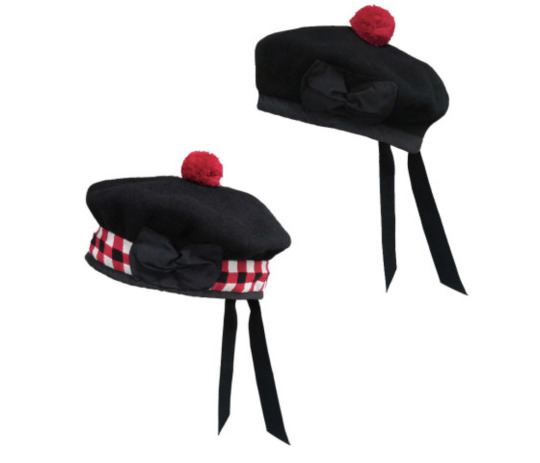
The Balmoral bonnet has been recorded to be worn as early as the 16th century. The hat was formerly referred to as the “Kilmarnock bonnet” or the “Kilmarnock cap”. The hat originates from the Balmoral Castle in Aberdeenshire, which is often occupied by the British Royal Family.
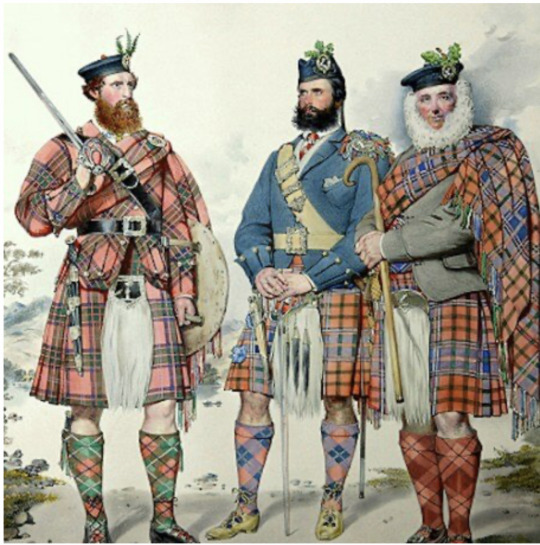
Queen Victoria’s Highlanders of Scotland
The bonnet takes the form of a knitted, soft wool cap with a flat crown. This traditional Scottish hat can be worn as part of both informal and formal Highland dresses, making it a beautifully diverse asset to your wardrobe.
Today, the Royal Regiment of Scotland continues to wear the cap. The various battalions of the Royal Regiment of Scotland identify themselves by wearing distinctive coloured feathers on their bonnets.
Tom O’ Shanter hat
The Tam O' Shanter cap is known best in Scottish culture by the famous 1790 Robert Burns poem, 'Tam O' Shanter'. It is sometimes known as the 'Tammie.' The Tam O' Shanter is a flat bonnet, originally made of wool hand-knitted in one piece, stretched on a wooden disc to give the distinctive flat shape.
FINAL THOUGHTS
While these hats originated in Scotland as part of the army uniform, they became part of the working class's wardrobe. Into the 19th century, the upper class embraced the bonnets for hunting and shooting all over the UK. Mass immigration of British to North America then popularised the cap in the USA, beginning the Scottish bonnet hat's worldwide journey.
Military and farmers are not the only ones in the tam game. Women adopted the fashion in the 1920s, and shorter haircuts came into style. Borrowing from men but making their own, women figured out ways to drape the hat in flatterable ways to frame their faces. The tam also saw spikes in popularity in the 1930s, with plaid and checks being fashionable and again in the 1970-1980s. Tams dominated the small hats in women’s fashion history over the years and today.
Massive fashion brands like Burberry and Vivian Westwood constantly added Scottish bonnet hats to their runway collections. Today, the Scottish bonnet hat is a globally recognisable piece of fashion.
***
Well... as you can see no such thing as an item of clothing called a Scotch bonnet but then if Diana Gabaldon did any research she’d know that. No self-respecting Scot would ever refer to themselves as Scotch.
By the way, the scotch bonnet is a variety of chilli pepper named for its supposed resemblance to a Scottish tam o' shanter bonnet. Scotland today uses the word Scotch whisky 🥃 as well as Scotch broth and Scotch mist not in another context.
***
Thank you, anon for the the discussion was a nice chat. Hope this clarifies your queries. ☕💬 😉💙
#LightBlueScotsBonnet #Bluebonnet #poem #RobertBurns #Glengarryhat #Balmoralhat #TamO'Shanterbonnet #Kilmarnockcap #Scotland
16 notes
·
View notes
Text
Cross out what you’ve already read. Six is the average.
Pride and Prejudice - Jane Austen Lord of the Rings - JRR Tolkien Jane Eyre - Charlotte Bronte Harry Potter series - JK Rowling To Kill a Mockingbird - Harper Lee The Bible - Council of Nicea (Not the whole thing, but a lot at church and all of Genesis for my Bible as Literature class) Wuthering Heights - Emily Bronte Nineteen Eighty Four - George Orwell His Dark Materials - Philip Pullman Great Expectations - Charles Dickens Little Women - Louisa M Alcott Tess of the D’Urbervilles - Thomas Hardy Catch 22 - Joseph Heller Rebecca - Daphne Du Maurier The Hobbit - JRR Tolkien Birdsong - Sebastian Faulk Catcher in the Rye - JD Salinger The Time Traveler’s Wife - Audrey Niffenegger Middlemarch - George Eliot Gone With The Wind - Margaret Mitchell The Great Gatsby - F Scott Fitzgerald Bleak House - Charles Dickens War and Peace - Leo Tolstoy The Hitch Hiker’s Guide to the Galaxy - Douglas Adams Brideshead Revisited - Evelyn Waugh Crime and Punishment - Fyodor Dostoyevsky Grapes of Wrath - John Steinbeck Alice in Wonderland - Lewis Carroll The Wind in the Willows - Kenneth Grahame Anna Karenina - Leo Tolstoy David Copperfield - Charles Dickens Chronicles of Narnia - CS Lewis Emma - Jane Austen Persuasion - Jane Austen (currently reading!) The Kite Runner - Khaled Hosseini Captain Corelli’s Mandolin - Louis De Bernieres Memoirs of a Geisha - Arthur Golden Winnie the Pooh - AA Milne Animal Farm - George Orwell The Da Vinci Code - Dan Brown One Hundred Years of Solitude - Gabriel Garcia Marquez A Prayer for Owen Meaney - John Irving The Woman in White - Wilkie Collins Anne of Green Gables - LM Montgomery Far From The Madding Crowd - Thomas Hardy The Handmaid’s Tale - Margaret Atwood Lord of the Flies - William Golding Atonement - Ian McEwan Life of Pi - Yann Martel Dune - Frank Herbert Cold Comfort Farm - Stella Gibbons Sense and Sensibility - Jane Austen A Suitable Boy - Vikram Seth The Shadow of the Wind - Carlos Ruiz Zafon A Tale Of Two Cities - Charles Dickens Brave New World - Aldous Huxley The Curious Incident of the Dog in the Night-time - Mark Haddon Love In The Time Of Cholera - Gabriel Garcia Marquez Of Mice and Men - John Steinbeck Lolita - Vladimir Nabokov The Secret History - Donna Tartt The Lovely Bones - Alice Sebold Count of Monte Cristo - Alexandre Dumas On The Road - Jack Kerouac Jude the Obscure - Thomas Hardy Bridget Jones’s Diary - Helen Fielding Midnight’s Children - Salman Rushdie Moby Dick - Herman Melville Oliver Twist - Charles Dickens Dracula - Bram Stoker The Secret Garden - Frances Hodgson Burnett Notes From A Small Island - Bill Bryson Ulysses - James Joyce The Bell Jar - Sylvia Plath Swallows and Amazons - Arthur Ransome Germinal - Emile Zola Vanity Fair - William Makepeace Thackeray Possession - AS Byatt A Christmas Carol - Charles Dickens Cloud Atlas - David Mitchell The Color Purple - Alice Walker The Remains of the Day - Kazuo Ishiguro Madame Bovary - Gustave Flaubert A Fine Balance - Rohinton Mistry Charlotte’s Web - EB White The Five People You Meet In Heaven - Mitch Albom Adventures of Sherlock Holmes - Sir Arthur Conan Doyle The Faraway Tree Collection - Enid Blyton Heart of Darkness - Joseph Conrad The Little Prince - Antoine De Saint-Exupery The Wasp Factory - Iain Banks Watership Down - Richard Adams A Confederacy of Dunces - John Kennedy Toole A Town Like Alice - Nevil Shute The Three Musketeers - Alexandre Dumas Hamlet - William Shakespeare Charlie and the Chocolate Factory - Roald Dahl Frankenstein - Mary Shelley The Canterbury Tales - Geoffrey Chaucer Paradise Lost - John Milton The Adventures of Huckleberry Finn - Mark Twain White Fang - Jack London The Portrait of Dorian Gray - Oscar Wilde Queen of the Damned - Anne Rice Strange Case of Dr. Jekyll and Mr. Hyde - Robert Louis Stevenson The Call of the Wild - Jack London The Importance of Being Earnest - Oscar Wilde The Wonderful Wizard of Oz — L. Frank Baum Don Quixote — Miguel De Cervantes Where the Wild Things Are — Maurice Sendak The Cat in the Hat — Dr Seuss The Giver — Lois Lowry Inkheart — Cornelia Funke Divine Comedy — Dante Alighieri Macbeth — William Shakespeare Romeo and Juliet — William Shakespeare The Child Called ‘It’ — Dave Pelzer The Hunger Games — Suzanne Collins The Diary of a Young Girl — Anne Frank Night — Elie Wiesel Les Misérables — Victor Hugo The Odyssey — Homer The Scarlet Letter — Nathaniel Hawthorne The Brothers Karamasov — Fyodor Dostoyevsky Eragon — Christopher Paolini
#books#stuff i've read#i had to copy/paste this out of one of those ancient posts you used to be able to edit entirely--even the parts you didn't write
9 notes
·
View notes
Text
"An August Wood Road"
by Sir Charles George Douglas Roberts
When the partridge coveys fly
In the birch-tops cool and high;
When the dry cicadas twang
Where the purpling fir-cones hang;
When the bunch-berries emboss—
Scarlet beads—the roadside moss;
Brown with shadows, bright with sun,
All day long till day is done
Sleeps in murmuring solitude
The worn old road that threads the wood.
In its deep cup—grassy, cool—
Sleeps the little roadside pool;
Sleeps the butterfly on the weed,
Sleeps the drifted thistle-seed.
Like a great and blazing gem,
Basks the beetle on the stem.
Up and down the shining rays
Dancing midges weave their maze.
High among the moveless boughs,
Drunk with day, the night-hawks drowse.
Far up, unfathomably blue,
August’s heaven vibrates through.
The old road leads to all things good;
The year’s at full, and time’s at flood.
1 note
·
View note
Text
THE NEST (1987) – Episode 238 – Decades Of Horror 1980s
“I so admire these nymph cockroaches – their ability to reproduce without the contribution of their male counterpart.” A society where men are incidental? Hmm. Humans could learn from cockroaches. Join your faithful Grue Crew – Chad Hunt, Bill Mulligan, Crystal Cleveland, and Jeff Mohr along with guest host effects artist Julian Ledger – as they experience the creepy, creature effects on display in The Nest (1987).
Decades of Horror 1980s Episode 238 – The Nest (1987)
Join the Crew on the Gruesome Magazine YouTube channel! Subscribe today! And click the alert to get notified of new content! https://youtube.com/gruesomemagazine
Decades of Horror 1980s is partnering with the WICKED HORROR TV CHANNEL (https://wickedhorrortv.com/) which now includes video episodes of 1980s and is available on Roku, AppleTV, Amazon FireTV, AndroidTV, and its online website across all OTT platforms, as well as mobile, tablet, and desktop.
A biological experiment goes haywire when meat-eating mutant roaches invade an island community, terrorizing a peaceful New England fishing village and hideously butchering its citizens.
Director: Terence H. Winkless
Writers: Robert King (screenplay by); Eli Cantor (based on the 1980 novel by; under the pseudonym Gregory A. Douglas)
Produced by: Julie Corman (producer), Roger Corman (executive producer) (uncredited)
Special Effects by:
Special Effects Coordinator: Cary Howe
Effects Artist: Julian Ledger
Special Effects: James M. Navarra
Puppeteers: Julian Ledger, Ted Lamoureux, Ralph Miller III, Dave Matherly (credited as Paul David Matherly), Christine Papalexis
Pyrotechnics: Roger George (Humanoids from the Deep pyrotechnics stock footage), Frank Ceglia
Selected Cast:
Robert Lansing as Elias Johnson
Lisa Langlois as Elizabeth Johnson
Franc Luz as Richard Tarbell
Terri Treas as Dr. Morgan Hubbard
Stephen Davies as Homer
Diana Bellamy as Mrs. Pennington
Jack Collins as Shakey Jake
Nancy Morgan as Lillian
Jeff Winkless as Church
Steve Tannen as Mr. Perkins
Heidi Helmer as Jenny
If you have a fear of roaches and pests, you’re gonna love episode 238! Yes, sir, it’s time for … The Nest (1987)! The Grue-Crew are joined by special effects artist Julian Ledger who worked on the film (despite being omitted on IMDb) as a puppeteer (according to the onscreen credits) and monster makeup and effects under the supervision of Cary Howe, providing behind-the-scenes insight into the making and design of the critters, creatures, and goo. There’s lots of entertaining discussion with Julian, Jeff, Crystal, and Bill. And, of course, bugs, baby … bugs.
At the time of this writing, The Nest is available for streaming from Tubi, Plex, and PPV from Amazon. It is also available on physical media as a Blu-ray disc from Shout! Factory.
Every two weeks, Gruesome Magazine’s Decades of Horror 1980s podcast will cover another horror film from the 1980s. The next episode’s film, chosen by Crystal, will be Dolls (1987), directed by Stuart Gordon and produced by Charles Band and Brian Yuzna. Special effects artist Ralph Miller III, who worked on the film under the supervision of John Carl Beuchler at MMI (Mechanical and Makeup Imageries) will be joining the 80s Grue Crew for this one!
Please let them know how they’re doing! They want to hear from you – the coolest, grooviest fans – so leave them a message or comment on the Gruesome Magazine Youtube channel, on the Gruesome Magazine website, or email the Decades of Horror 1980s podcast hosts at [email protected].
Check out this episode!
1 note
·
View note
Quote
August when the partridge coveys fly In the birch-tops cool and high; When the dry cicadas twang Where the purpling fir-cones hang; When the bunch-berries emboss— Scarlet beads—the roadside moss; Brown with shadows, bright with sun, All day long till day is done Sleeps in murmuring solitude The worn old road that threads the wood. In its deep cup—grassy, cool— Sleeps the little roadside pool; Sleeps the butterfly on the weed, Sleeps the drifted thistle-seed. Like a great and blazing gem, Basks the beetle on the stem. Up and down the shining rays Dancing midges weave their maze. High among the moveless boughs, Drunk with day, the night-hawks drowse. Far up, unfathomably blue, August's heaven vibrates through. The old road leads to all things good; The year's at full, and time's at flood.
“An August Wood Road” by Sir Charles George Douglas Roberts
85 notes
·
View notes
Photo

Sang the sun rise on an amber morn -
'Earth, be glad! An April day is born.
'Winter’s done, and April’s in the skies,
Earth, look up with laughter in your eyes!’ ~Sir Charles George Douglas Roberts
#firstdayofapril #aprilispoetrymonth
1 note
·
View note
Text
Anonymous asked: So as someone who is a royalist and also an Oxbridge grad what do you make of the dreadful events at Oxford University where a college took down a portrait of the Queen? Is this wokeism gone mad? I wonder what’s next for these privileged and pampered left wing lunatics?
So I was having breakfast the other day and tucking into my croissant that I dipped into English marmalade (it’s nicer than you think) as I was scrolling through my newsfeed on my mobile phone, a front page headline in the London Times today read: “Oxford college removes Queen’s portrait over colonial links.” Well, I thought to myself there’s a proper marmalade-dropper of a headline.
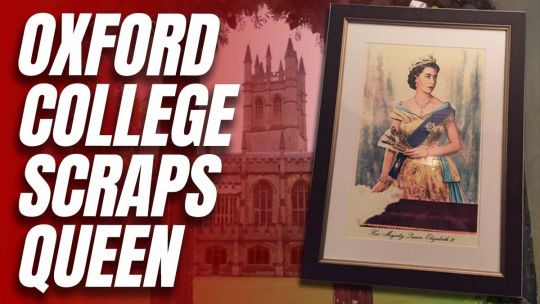
Although I went up to Cambridge to read Classics as an undergrad I did hop over to the other place to pursue my graduate studies. And to be honest I had a throughly good time studying at Oxford. My heart will always loyally remain light blue but I do have a soft spot for the dark blue of Oxford. A couple of my older siblings were undergrads at Oxford (a good reason to go the other way). So I do care on some level. I suppose I was meant to be shocked by the clickbait headline. And I was. Sort of. But I didn’t want to get myself worked up into a hissy fit so early in the morning. I simply try and make it a rule not to start the day in anger. There will be plenty of opportunity to get angry during the rest of the work day that’s for sure. To start your day in a sour and angry mood is a waste of precious energy. So I sighed and scrolled past to read more about the upcoming G7 summit and other news stories of the day.
Switching off my phone I rushed out into the glorious sun kissed streets of Paris to an in person business breakfast meeting at a nearby café (terrace cafés are now open in Paris all of which means less face time glued to onscreen Zoom meetings). When I did switch on my phone I was surprised to see so many expletive laden texts and WhatsApp messages from family and friends in the UK mostly about the fact that it was Magdalen College, Oxford had decided to remove a picture of the Queen.
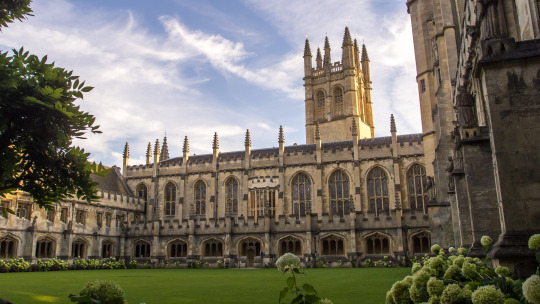
Magdalen? Magdalen?! The Magdalen of Thomas Wolsey, William Tyndale, John Betjeman, Seamus Heaney (Nobel winner), T.E. Lawrence, Julian Barnes, Alan Garner, Dudley Moore, Terence Malick, Peter Brook, Katie Mitchell, Ian Hislop, six Nobel Prize winners in Medicine, Chemistry and Physics (Sir John Eccles, Lord Howard Florey, Sir Peter Medawar, Sir Robert Robinson, Erwin Schrödinger, and Sir Charles Sherrington), two associate US Supreme Court Justices (Steven Breyer and Alan Souter), Andrew Lloyd Webber, Compton Mackenzie, Wilfred Thesiger, Robert Macfarlane, A.C. Grayling, Douglas Murray, Andrew Sullivan, many eminent historians (including Edward Gibbon, Edward Byles Cowell, Niall Ferguson, Robin Lane Fox, Martin Gilbert, Felipe Fernandez-Armesto, Albert Hourani, Adam Roberts, Norman Davies, N.H. Gibbs etc), countless British politicians (William Hague and George Osborne) and the judiciary, and other luminaries who made their mark in other fields.
Most of all, when I think of Magdalen I think of Oscar Wilde and C.S. Lewis.
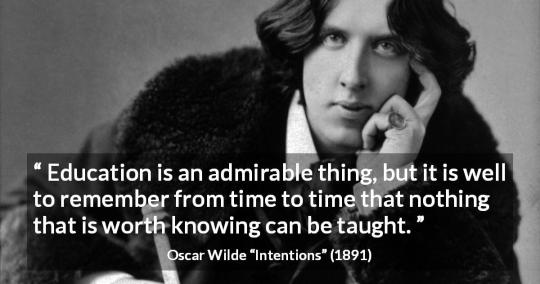

I wondered why would Magdalen College of all the Oxford colleges do this? Magdalen has always been royalist throughout its long history. The Queen herself received an honorary degree in 1948. The monarch also visited in 2008 to mark its 550th anniversary.
So it’s not as if I’m not busy with back to back meetings and work deadlines, but somewhere I found a window during my lunch break to actually scroll back to the London Times article headline and this time read the story.
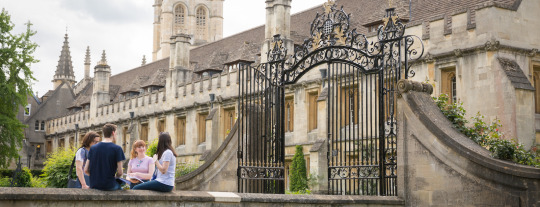
Magdalen is not the oldest college in Oxford, having been founded in 1458, but it is almost certainly one of the most beautiful. Whether, as the London Times claimed, it is one of the wealthiest, I do not know. Not mentioned, but more relevant to the story, is the fact that it was the first college in either ancient university to be attended by a Prince of Wales. The future Edward VIII, the present Queen’s uncle, studied (or rather played polo) at Magdalen before the First World War. The college has many other royal connections and the Queen herself last visited the place in 2008. So the thought of royal portraits being taken down conjures up an image of the Hall, lined with huge paintings of the founder, William Waynflete, Bishop of Winchester and Lord Chancellor, followed by Cardinal Wolsey and Queen Elizabeth I, plus many others portraits of the great and (sometimes) good. As most of these are male, there is at present, or so I’ve been informed, an exhibition in Hall of photographs of women with links to Magdalen.

As is so often the case, there is less to this London Times news story than meets the eye. As the Americans like to say it’s a ’nothing burger’.
It is not ‘the college’ per se that has taken down the Queen’s portrait, nor even the undergraduates, but a committee of the Middle Common Room (MCR) - which represents postgraduate students.
As the President of Magdalen, the eminent barrister, Dinah Rose QC, commented: “The Middle Common Room is an organisation of graduate students. How they choose to decorate their room is a matter for them.” The portrait in question is a faintly colourised print of a photograph taken at the time of the Accession in 1952. It has hung there, doubtless hitherto unnoticed, since 2013. How it got there no one really knows. It’s been part of the furniture all these past years and had gone un-noticed by postgrad students.
The news story does not reveal who decided to make an issue of this harmless photo, but apparently the MCR committee voted to remove it because “for some students depictions of the monarch and the British monarchy represent recent colonial history”. The head of the committee, Matthew Katzman, said that “the room should be a welcoming, neutral place for all members, regardless of background, demographic or views”. They wish to replace the royal image with “art by or of other influential and inspirational people”.

The reaction it is fair to say has been one of outrage across many national news media. Predictably hyperbole and hysteria have characterised the response by the tabloid press and those on social media.
‘Disgraceful!’ ‘Disrespectful shits!’ ‘Deport them!’ were some of the more obvious headlines.
‘Now the Queen gets cancelled.’ (No, the old girl will still be there long after they cancel Netflix’s The Crown)
‘And to think in some parts of the world, to merely talk ill of the head of state lands you in prison.’ (He means the ex-colonies, in America they just give you a cable show).
‘Universities need to start being defunded. The insanity must end.’ (Universities have been defunding for years thanks to cruel and short sighted government cuts).
‘That's what happens when you engage in social engineering’ (yes, you end up with Boris Johnson as Prime Minister).
‘Our universities indoctrinate young people into the left. It's almost like a cult or how isis recruits its members’ (do terrorist cults have diversity hiring policy and safe spaces for the easily triggered?)
‘Oxford and Cambridge are actually Wokesbridge’ (could be worse, it could be the London School of Economics).
‘Remove the Queen? Half of these woke dick heads are queens themselves!’ (Okay, that’s quite funny actually)
‘I wouldn’t have been surprised if this was about Cambridge University but Oxford? That’s quite a thing.’ (Ouch, that hurts)
‘Has Magdalen considered offering a degree in virtue signalling?!’ (I fear it would be oversubscribed)
Anyway, you get the idea.

What I find distasteful is how the tabloids went after the MCR President. He happens to be American, Matthew Katzman, a 25 year old Stanford graduate now researching his PhD in computer science. So they used him as a straw man to build the bonfire to stoke the fires of outrage. The tabloids gleefully revealed that Katzman came from a privileged Washington DC home. His father - a high powered DC lawyer - was also paraded on their pages as if he did something wrong. Matthew went to Sidwell Friends, an elite private high school in DC, that typically boasts of the children of past presidents who went to the school (From Nixon to Obama). As anyone knows Sidwell Friends it is not and has ever been a nest of wokery. It actively eschews Critical Race Theory etc. It did finally hire a director of equity in 2019 but after Katzman had gone to Stanford.
The tabloids did their best to whip up anti-American hysteria by shrinking on top the trope of privileged upper middle class brats getting all woke. Katzman didn’t push for the motion he meremy presided over as the President is supposed to do. What else was he supposed to do?
To me, it was disgusting to see such character assassination. These journalists (mostly Oxbridge themselves) know better but will never let ethics get in the way of a good story to generate faux outrage.

So a few points to clarify this over-egged scandal.
For those who don’t know about such things the Middle Common Room (MCR) is essentially social common room for postgrads to mingle and relax. It’s not the Carlton Club or The Reform Club or any image one can conjure up of the oak panelled gentleman clubs in London. It’s a glorified break room. Typically it has dingy leather chairs moping around, a coffee stained reading tables full of newspapers and journals, a big TV screen, and a kitchen area to cook or make tea and coffee.
Every college in both Oxford and Cambridge has one. Undergrads have the JCR (Junior Common Room) where there is typically a bar and a pool table; the Dons have the SCR (Senior Common Room) where they congregate to have port or wine before and after a High Table meal.

The MCR is really a very quiet room to relax in and how ornate or dingy it is depends upon how wealthy or poor and old or new the college is. To be honest in my experience no one really notices how an MCR is decorated. There are notice boards with flyers of university and college events taking place from sporting to the arts. There are often framed portraits on the wall but they usually tend to be of historic photos of great sporting achievements by college teams (like rowing, rugby, or football). There may well be a portrait or two of a historical figure connected to the college that hangs on a wall and even then they are largely forgotten as if they were part of the wallpaper.
Having done my postgraduate studies at Oxford I can say that it’s a different experience to being an undergraduate as you are less involved in college life. By and large anyone who has done their postgrad studies at both Oxford and Cambridge will tell you that postgrads are generally treated like crap (actually that’s true in most universities these days). Everything is focused around the undergraduates - the famous one-to-one tutorials (or supervisions as we say in Cambridge). Undergrads tend to live within the college and postgrads are shunted out to generally live off site in college halls or private housing.
The irony is that it’s the postgrads - many of them from overseas - bring in cash (higher fees and research money). Both the university and the colleges increasingly now depend upon lots of research dosh from such students to replenish their coffers and maintain their highly prized international rankings within the top 5 best universities in the world.
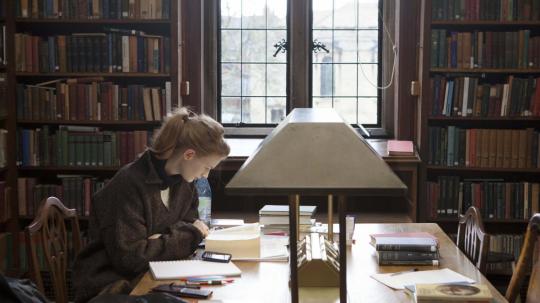
Postgrads - most of them - are too busy with their own academic research and meeting of deadlines to be overly political in my experience. The graduate community that uses the MCR is a very small fraction of the graduate community of the college itself. You get the same old faces in there all the time.
I remember I only ever used my college’s MCR to shower and change from early morning sports training before cycling over for long study sessions in the Bodleian, sleeping off a hang over from a drunken night before, or chewing my nails ahead of meeting my graduate tutor for a piece of work I knew was rubbish because I had gone to a wild party in London the night before, or procrastinating on my own work by lounging in a comfy leather chair and happily volunteering to reading my friends’ PhD chapters in subjects I knew next to nothing about (I sure did learn a lot though).
I don’t know of any Oxbridge MCR - whether the college leans left or right by virtue of its reputation or demographics etc - where graduate students are super active in the MCR. Out of the hundreds of grad students I doubt you would have more than 20 ever attend one MCR meeting in their time at that college. Root canal dental work would be more desirable. It’s like a high school prom committee to give an American comparison. They organise the social events and all anyone cares about is making sure there’s enough coffee and tea in the cupboards.
So at these meetings a member of the MCR can say I don't like that picture let's have a vote to take it down, and it just happens to be who is in the general meeting at the particular time. Which isn’t many. In the case of Magdalen MCR, Out of the 250 or so graduates, only 17 students actually bothered to turn up and vote.

I’m not sure this is worth getting steamed up about. Oxbridge students have always been self-righteous bores. I know we were back in my day. The current crop are no different.
This may be a hard concept to understand but the United Kingdom is a liberal democracy where freedom of political thought and expression is an ideal that men and women have died for. Denying people education because of youthful political beliefs would be somewhat contrary to that. Voted (or put up?) to put it up in 2013, voted to take it down in 2021. Voted. Democratically. No one outside of Magdalen should care. If other graduate students within Magdalen really care then they should actually bother to turn up and vote.
More importantly what kind of signal does this send in the wider battle of ideas? If you are like me who detests the petty viciousness of ‘cancel culture’ then what does say for the moral high ground that we think we occupy when we make own argument against the evils of cancel culture? If we seek to ‘cancel’ a democratically held vote by forcing these students to put the portrait back up then how are we any different from the pernicious faux outrage on those on the far left and the woke mobs?
I would like everyone to take a breath and pause for reflection. They're taking one picture down in one room. It's not like they're declaring a republic. This so-called affront doesn’t even come close to the infamous "This house would fight for king and country" Oxford Union debate of the 1930s for weighty moral controversy.
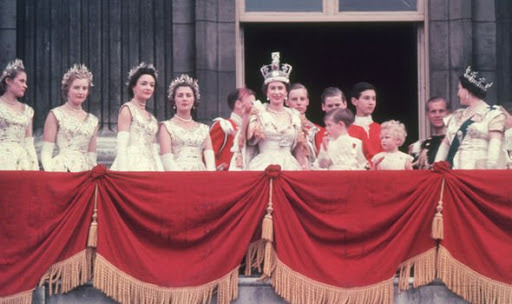
The MCR common room is not a public space, but neither is it a matter of indifference for those who care about Magdalen or indeed Oxford.
Because while I am dismissive over this silly storm in a tea cup to provoke another round of the culture wars, I am incredulous at the reasoning for the removal of the Queen’s portrait. If they said we don’t like it as she’s stuffy old bird and we prefer to stick up something cooler like Jimi Hendrix or whoever. That I can understand. But the fact they invoked ‘colonialism’ as the main reason is just baffling.
It is almost laughable to think that these incredibly bright students, every one of whom is privileged to have been accepted there because the to get in is super tough, can be so historically illiterate. Was there anyone there doing a PhD in British imperial history to remind of everyone else of things of salient facts?
The Queen ascended to the throne in 1952. Her reign began with the start of decolonisation, especially in Africa. In its place emerged the Commonwealth of which the Queen is the head of a Commonwealth of 54 member countries; fifteen of these countries, she is the official head of state.
I don’t know any scholar or politician or journalist who can doubt that it was her personal achievement to have transformed the Commonwealth from a relic of the colonial era into a benign and entirely voluntary presence on the international stage. Netflix’s The Crown gets a lot of things wrong with the Queen and plays fast and loose with historical facts but even they were at pains to show just how much the Queen cherishes the Commonwealth and its interests even if she had to go against her own Prime Minister (Thatcher) on contentious issues.
Every one of these former colonial countries respect and even love the Queen and marvel at her quiet leadership.
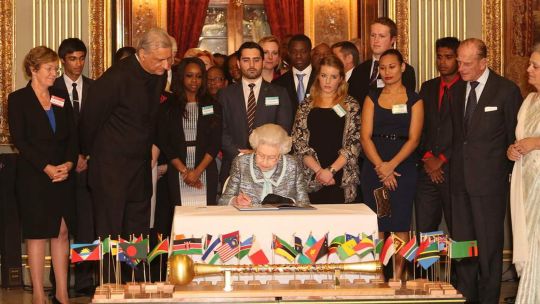
It is her personal achievement to have transformed the Commonwealth into a useful voice for the developing world to solve issues like education, poverty, and climate change. Largely she enjoys this position of quiet authority because she has remained scrupulously above politics throughout her long reign, uniquely among world leaders she is universally respected. In fact, it would be hard to find a more “influential and inspirational” person, or one better suited to a “welcoming, neutral place”.
To me these 17 students (actually we don’t know the voter tally as it could easily have been 8-7), were being blinkered in their outlook that they would find this reminder of the Queen’s larger significance to the Commonwealth in their common room obtrusive or even offensive.
What you won’t find on social media or events followed by the news media are other more important issues that don’t seem sexy enough to warrant a clickbait headline.
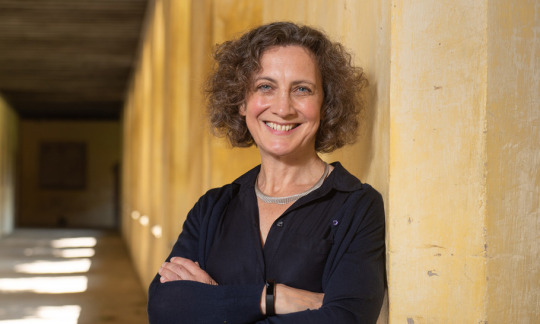
A few months ago, Magdalen itself was briefly in the news because the President - a distinguished human rights barrister - was criticised for representing a Commonwealth country, the Cayman Islands, in a case that involved the legality of same sex marriage there.
Absurdly, it was suggested by Stonewall and others that the college of Oscar Wilde was no longer a “safe space” for LGBTQ students and that President Dinah Rose QC - the first woman to be elected head of the college - had done something wrong.
Her colleague Edward Fitzgerald QC pointed out that she had “acted perfectly properly” and that to return her brief would be a “breach of her professional duty”. For a brief moment it, though, looked as if the campaign against her might escalate on social media. Once the Fellows and students made clear their support for the President, however, the row soon blew over.

Or take the ongoing saga at Oriel College, Oxford. The college authorities seem to be standing by the their guns in not removing the statue of Cecil Rhodes after a well publicised outcry from leftists and woke activists.
Oriel College said they had decided not to remove the monument due to 'considerable obstacles', including financial costs and 'complex' planning processes. An independent inquiry to examine Rhodes' legacy was set up last June in the wake of BLM protests after the governing body 'expressed their wish' to remove the statue from outside the college. A majority of members on the Commission supported the college's original wish to remove the Rhodes' statue. But Oriel College said: 'In light of the considerable obstacles to removal, Oriel's governing body has decided not to begin the legal process for relocation of the memorials.'
The Rhodes Must Fall campaign accused Oriel College of 'institutional racism’. Recently, according to the Daily Telegraph, more than 150 lecturers have since refused to give tutorials to Oriel’s undergraduate students following the decision by Oriel’s refusal. Lecturers reportedly pledged to withdraw from all talks, seminars and conferences sponsored by Oriel and stop their involvement in interviewing students and recruiting fellows. However, the boycott does not include work which is not discretionary, such as exams, delivering lecturers and supervising postgraduate students (because they have contracts tied to research funds).
Many rightly see it as academic blackmail. They are holding hostage the education of Oriel undergraduates for their own political beliefs. They are unfairly punishing students not the college.
I feel sorry for the students. They have been in lock down most of the past year with the all stress that distant online learning brings and now they come back to this nonsense. A lot of these students are paying fees they can barely afford and now they are being punished on the altar of wokedom.

One of those supporting the anti-Rhodes campaign has been Robert Gildea, Professor of Modern History at Worcester College, who suggested Oriel College should place a sign saying 'Sorry' around Rhodes' neck. He told BBC Radio 4's Today programme: 'One of the options offered by the commission was to retain and contextualise, so if the college put up a notice explaining who Cecil Rhodes was that would be fine. If the college put a placard around his neck at lunchtime today saying 'Sorry' that would also be fine.'
Many Oxford dons have rightly condemned Gildea and branded his actions as despicable and mean-minded. It is unprecedented for the head of one Oxford college to attack and detract from the teaching of students at another college. It is politics based on ignorance and bias, and should have nothing to do with Oxford or any other university, where the principal aim should be to educate students and not damage their learning through left-biased agitation.

Put into context then, the bone of contention at Magdalen and the Queen’s portrait seems even more trivial.
One simply can’t get whipped up into a frenzy over every little matter. If so one risks in return of being easily triggered. Indeed, like the woke leftists and SJW crowd, people of a more conservative pursuasion might fall victim to the same affliction as they do. Namely the law of Maslow’s hammer. As Abraham Maslow said in 1966, “I suppose it is tempting, if the only tool you have is a hammer, to treat everything as if it were a nail.”
Of course, nobody should be forced to hang a portrait of the Queen in their common room. Even its removal is a matter of the utmost insignificance. Perhaps the MCR committee thought nobody would notice or care what they did. Now that it has become a news story, however, I confess that I am dismayed by the lack of judgement, tact and taste shown by these students. Nor did they do their research very well. It evidently did not occur to them that if the Queen had been a symbol of colonialism, Nelson Mandela would hardly have been one of the few non-royals to be on first name terms with her. (He called her “Elizabeth”, she called him “Nelson”.)

The best thing the committee could do now is to consult more widely among their members and, perhaps, consider a change of heart. Better still: Magdalen should invite the Queen to revisit the college, so that its graduate students can see for themselves why her portrait belongs in their common room after all.
I was joking with my older sister who was at Oxford as an undergrad about how sensitive and easily triggered these students must have been at looking at a picture of the Queen. Presumably they are happy seeing the Queens face on a £50 note though, my sister quipped. If they want to dispose of their bank notes, my sister will happily take them off their hands and give the cash to the homeless.
I couldn’t help agreeing with an Oxford educated African colleague from work who suggested quite reasonably that perhaps these easily triggered students shouldn't go to Oxford University to study since they're so concerned with benefiting from the colonial past. No one is forcing them to come to Oxford.
How can the pampered middle class woke argue with that?

Deep breath.
Thanks for your question
#question#ask#magdalen#oxford#university#cambridge#queen#monarchy#church of woke#wokism#protests#education#culture#society
30 notes
·
View notes
Text

Bonjour à tous, it’s a gorgeous day 26c and although I don’t want to be inside, I have jobs that need to be done!
Now what have I been up to this week 🤔, oh yes, I had a visit from a man from Orange (the phone people, not the City), he was explaining that I have to change to fibre as ADSL is on its way out. He had to come inside while we discussed things and as he wrote his name on paperwork I noted it was not a French name. It was Tunisian and as we had been speaking « Franglais » I remembered 4 words in Tunisian Arabic, he was quite impressed that I knew the word for stars and was able to bid him farewell in Tunisian too. As my dad would have said « No flies on me! »
It has been a week of catching up with friends, one who celebrated her birthday and then both her and her husband tested positive for Covid! I had a message from Monique, she had sorted some items for Ukrainian refugees and wanted to drop them off at my home. We had a lovely couple of hours , chatting about her grandchildren and mine, it was great to catch up. I met the Chief of Police in town and then as I called into the police office to pick up recycling bags she was joking about the new terrace on the front of the house, she said she has told her colleagues that I sit and drink cocktails there! After that (as I was stressing a bit) I called into the pharmacy to see if they were doing vaccinations again as I had looked to have a 4th Covid vaccination and the website only gave me towns dozens of kilometres away! Yes! I was added to the list and I received the telephone call on Friday and a rdv for this Thursday……. brilliant! I turned up at the bar on Wednesday morning even though I know he is closed, I did go along on Thursday evening to read the paper and have a coffee. I messaged Pauline, she is enjoying her work so much. Unfortunately, her grandmother did contract Covid but not from Pauline…. She is feeling better now.
It was the barbecue for the refugees on Wednesday. I was told it was at midi, however the barbecue was just getting fired up then, I was sat with the refugees and couldn’t see any other volunteers there, it turned out they were in the kitchen preparing the food, I maybe should have been up there too but no-one told me that! There was so much food and food parcels of chicken, sausage and merguez were given out at the end . It was a wonderful way to pass an afternoon, the weather was very good too. The lady who had been refused « right to remain » for a second time was telling me on Friday, that they have been given until the end of July in their apartment and then they will be moved to temporary accommodation before going who knows where! She is the lady who is pregnant with her second child, due in November, I am sure she could do without all this stress. I am busy knitting something for the new baby before they go.
I have been preparing my « speech » for Tuesday afternoon, I need to speak it aloud to make sure I have the pronunciation correct. Laëtitia is calling by on Monday evening so I will be able to practice it then too.
It’s official, I have a date to come over to the UK I need to try and book the accommodation tomorrow otherwise I will be well and truly snookered! I am going to be looking after my granddaughter for a few mornings but I am sure we will be able to fill that time in with playing etc.
Excerpt from July by Sir Charles George Douglas Roberts
I am for the open meadows,
Open meadows full of sun,
Where the hot bee hugs the clover,
The hot breezes drop and run.
How have we arrived at the seventh month of the year so quickly? My grandson will be celebrating his first birthday soon, wow I can’t wait to see the little chap again. I also cannot wait to see my « big men », my DiL and my gorgeous granddaughter.
See you next time!

1 note
·
View note
Photo
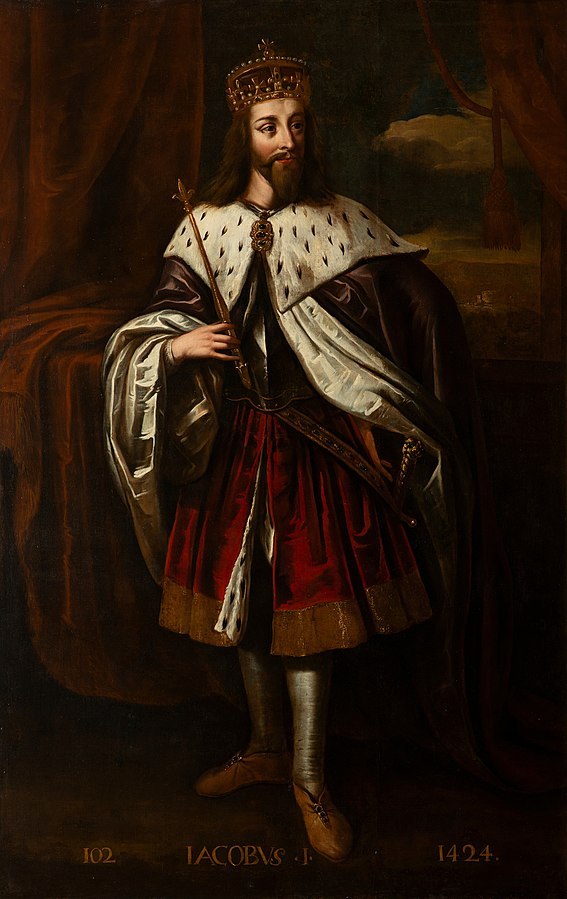
File:Jacob Jacobsz de Wet II - James I, King of Scotland (1394-1437) - 1684-6
James I (late July 1394 – 21 February 1437) was King of Scotland from 1406 to 1437. The youngest of three sons, he was born in Dunfermline Abbey to King Robert III and his wife Annabella Drummond. His older brother David, Duke of Rothesay, died under suspicious circumstances while being detained by their uncle, Robert, Duke of Albany. His other brother, Robert, died young. Fears for James's safety grew through the winter of 1405/6 and plans were made to send him to France. In February 1406, James was forced to take refuge in the castle of the Bass Rock in the Firth of Forth after his escort was attacked by supporters of Archibald, 4th Earl of Douglas. He remained there until mid-March when he boarded a vessel bound for France. On 22 March English pirates captured the ship and delivered the prince to Henry IV of England. The ailing Robert III died on 4 April and the 11-year-old James, now the uncrowned King of Scotland, would not regain his freedom for another eighteen years.
James was educated well at the English Court where he developed respect for English methods of governance and for Henry V. The Scottish king, apparently willingly, joined Henry in his military campaign in France during 1420 – 1421. His cousin, Murdoch Stewart, Albany's son, who had been an English prisoner since 1402, was traded for Henry Percy, 2nd Earl of Northumberland, in 1416. James had married Joan Beaufort, daughter of the Earl of Somerset, in February 1424 just before his release in April. The King's re-entry into Scottish affairs was not altogether popular since he had fought on behalf of Henry V in France and at times against Scottish forces. Noble families were now faced with paying increased taxes to cover the ransom repayments but would also have to provide family hostages as security. James, who excelled in sporting activities and appreciated literature and music, also held a strong desire to impose law and order on his subjects although he applied it selectively at times.
To secure his position, James launched pre-emptive attacks on some of his nobles beginning in 1425 with his close kinsmen, the Albany Stewarts, resulting in the execution of Duke Murdoch and his sons. In 1428 James detained Alexander, Lord of the Isles, while attending a parliament in Inverness. Archibald, 5th Earl of Douglas, was arrested in 1431, followed by George, Earl of March, in 1434. The plight of the ransom hostages held in England was ignored and the repayment money was diverted into the construction of Linlithgow Palace and other grandiose schemes. In August 1436, James failed in his siege of the English-held Roxburgh Castle and then faced an ineffective attempt by Sir Robert Graham to arrest him at a general council. James was assassinated at Perth on the night of 20/21 February 1437 in a failed coup by his uncle Walter Stewart, Earl of Atholl. Queen Joan, although wounded, managed to evade the attackers and reached her son, now King James II, in Edinburgh Castle.
Jacob Jacobsz de Wet II (1641, Haarlem – 1697, Amsterdam), also known as James de Witt, was a Dutch Golden Age painter known for a series of 110 portraits of Scottish monarchs, many of them mythical, produced for the Palace of Holyroodhouse, Edinburgh during the reign of Charles II.
31 notes
·
View notes
Text


On November 20th 1776 William Blackwood, the noted Scottish publisher and bookseller was born in Edinburgh.
At the age of fourteen began a six year apprenticeship to the booksellers Bell & Bradfute. Following further training in Glasgow and London, he opened his first shop on Edinburgh. Specialising in selling rare books the business was a success. In 1813 Blackwood became the agent for the printers of Sir Walter Scott’s novels.
Four years later he founded the ‘Edinburgh Monthly Magazine’, later called Blackwood’s Edinburgh Magazine, and from 1905 called Blackwood’s Magazine. Established as a counterweight to the Edinburgh Review, it quickly gained notoriety with its satire on the Edinburgh Whigs and attacks on the Cockney school of poets, it also gained circulation by publishing stories, poems, and serialised novels. Later the magazine became less controversial and exercised a wide and steady literary influence. Scott, James Hogg, and Thomas De Quincey were among its early contributors.
Blackwood was succeeded by his sons Alexander (1806–45), Robert and John. They added a London office to the business in 1840 and an Edinburgh printing office in 1847. After them the conduct of the firm passed, in turn, to William Blackwood , George Blackwood (1876–1942), James Blackwood), and George Douglas Blackwood , great-great-grandson of the founder.
After the mid-19th century, the magazine published serially and then in book form works by George Eliot, Edward Bulwer-Lytton, Charles Lever, Anthony Trollope, and Joseph Conrad.
William Blackwood died in 1834 and is buried in an ornate vault in the lower western section of Old Calton Cemetery.
7 notes
·
View notes
Quote
August When the partridge coveys fly In the birch-tops cool and high; When the dry cicadas twang Where the purpling fir-cones hang; When the bunch-berries emboss— Scarlet beads—the roadside moss; Brown with shadows, bright with sun, All day long till day is done Sleeps in murmuring solitude The worn old road that threads the wood. In its deep cup—grassy, cool— Sleeps the little roadside pool; Sleeps the butterfly on the weed, Sleeps the drifted thistle-seed. Like a great and blazing gem, Basks the beetle on the stem. Up and down the shining rays Dancing midges weave their maze. High among the moveless boughs, Drunk with day, the night-hawks drowse. Far up, unfathomably blue, August's heaven vibrates through. The old road leads to all things good; The year's at full, and time's at flood.
An August Wood Road
by Sir Charles George Douglas Roberts
35 notes
·
View notes
Text
The Cinematic Legacy of Lupin: Arsène Lupin’s Live-Action Filmography
https://ift.tt/2ToNPSY
When Netflix premiered the first season of Lupin last January, 70 million sheltered-in-place households ravenously binged it, making the series the most-watched non-English show for its premiere month on the streamer so far. Lupin steals a page from French literature. The hero of Lupin, Assane Diop (Omar Sy) is inspired by France’s iconic ‘Gentleman Thief’ Arsène Lupin, a fictional figure created by French writer Maurice Leblanc in 1905.
Lupin was the subject of some two dozen books by Leblanc, who continued adding into his literary franchise until well into the 1930s. Akin to Robin Hood, Lupin stole from the rich, and often did good deeds despite his thieving capers. He was a master of deception and disguise, a lady killer who always operated with a classy panache. With a legacy spanning more than a century, there have been plenty of live-action depictions in film and TV.
The First Lupin Films are Over a Hundred Years Old
The earliest cinematic portrayals of Lupin were in black and white, and many have been lost. One of the very first was a U.S. production, a short film titled The Gentleman Burglar in 1908. William Ranows, a veteran of over sixty films, played Lupin. It was directed by one of the first film directors ever, Edwin Porter, who worked for Edison.
Leblanc was a contemporary of Sir Arthur Conan Doyle, the creator of Sherlock Holmes. Consequently, Holmes appears in a few Lupin stories. Doyle took legal action against Leblanc, forcing the name change in Lupin stories to the thinly disguised ‘Herlock Sholmes.’ As Holmes is loved by the British, Lupin is cherished by the French, and both characters became global icons. Consequently, among the many film and TV adaptations, several that depicted their rivalry regardless of copyright issues. In 1910, a German film serial titled Arsène Lupin contra Sherlock Holmes starred Paul Otto as Lupin and Viggo Larsen as Holmes (Larsen also served as director.) There were allegedly five installments in the series, but they’ve all been lost.
France produced Arsène Lupin contre Ganimard in 1914 with Georges Tréville as Lupin (Inspector Ganimard was constantly on Lupin’s trail). The silent film Arsène Lupin came out of Britain in 1916 with Gerald Ames in the titular role, followed by more U.S. productions: Arsène Lupin (1917) starring Earle Williams, The Teeth of the Tiger (1919) with David Powell, which is also lost, and 813 starring Wedgwood Nowell. 813 was the title of Leblanc’s fourth Lupin book.
Lupin and the Barrymore Clan of Actors
The legendary thespian John Barrymore played Lupin in 1932’s Arsène Lupin. He took on the role under one of Lupin’s aliases, the Duke of Charmerace. His brother, Lionel Barrymore, played another Lupin nemesis, Detective Guerchard. Given the illustrious cast, this is a standout Lupin film, although there isn’t a shred of Frenchness in Barrymore’s interpretation. Coincidentally, John Barrymore also played Holmes in Sherlock Holmes a decade earlier. He is also the grandfather of Drew Barrymore.
Barrymore’s Arsène Lupin revolved around the theft of the Mona Lisa from the Louvre. Historically, the Da Vinci masterpiece was stolen in 1911 and recovered in 1913. This inspired a Lupin short story, a parody akin to early fanfiction that was not written by Leblanc. In 1912, mystery writer Carolyn Wells published The Adventure Of The Mona Lisa which imagined Holmes and Lupin to be part of the International Society of Infallible Detectives alongside A. J. Raffles, Monsieur Lecoq, and other crime-solving luminaries. Barrymore’s Arsène Lupin does not retell this tale, but the theft of the Mona Lisa comes up again in other Lupin films because it’s France so robbing the Louvre is a common plot point. Netflix’s Lupin begins with Diop’s heist of the Queen’s necklace from the Louvre, an Easter egg referring to Leblanc’s original Lupin short story, ‘The Queen’s Necklace’ published in 1906.
The ‘30s delivered two more Lupin films. The French-made Arsène Lupin detective (1937) starred Jules Berry as Lupin and the American-made Arsène Lupin Returns (1938) with Melvyn Douglas who was credited under another Lupin alias Rene Farrand (Lupin has a lot of aliases). Despite being a completely different production, Douglas’ film was an attempt to capitalize on the success of Barrymore’s film as both films were from MGM. Universal Studios entered the fray soon after with their version Enter Arsène Lupin (1944) starring Charles Korvin. The following year, the Mexican-made Arsenio Lupin (1945) featured Ramón Pereda as the French thief. That film also starred José Baviera as Sherlock.
The Early Japanese Lupin Adaptations
Lupin captured the hearts of the Japanese. Ironically, Japanese speakers have a difficult time pronouncing ‘L’s so Lupin is usually renamed as ‘Rupan’ or ‘Wolf’ (Lupine means wolf-like – remember Remus Lupin from Harry Potter). As early as 1923, Japan also delivered a silent version of 813, retitled Hachi Ichi San, starring Komei Minami as the renamed Lupin character of Akira Naruse.
In the ‘50s, Japan produced 3 films that credit Leblanc: Nanatsu-no Houseki (1950) with Keiji Sada, Tora no-Kiba (1951) with Ken Uehara, and Kao-no Nai Otoko (1955) with Eiji Okada. However, post-WWII Japan has obscured most of the details on these films. Like Hachi Ichi San, these Japanese versions laid the foundations for the Lupin III, which debuted as a manga in 1967 and spawned a major manga and anime franchise. In karmic retribution for Leblanc poaching Sherlock, Japan stole Lupin. Lupin III was Arsène Lupin’s grandson.
Notably, the second Lupin III feature film, The Castle of Cagliostro, marked the directorial debut of famed animator Hayao Miyazaki and is considered a groundbreaking classic that inspired Pixar and Disney (Disney’s The Great Mouse Detective (1986) pilfered the finale clockwork fight from The Castle of Cagliostro). In the wake of the anime Lupin III Part I (1971), Japan produced some anime films that were more loyal to Leblanc, notably Kaitō Lupin: 813 no Nazo (1979) and Lupin tai Holmes (1981). However, this article is focused upon live-action adaptations. Lupin III is another topic entirely.
In the late ‘50s and into the ‘70s, France reclaimed her celebrated son. Robert Lamoureux became Lupin for two films, Les aventures d’Arsène Lupin (1957) and Signé Arsène Lupin (1959). A comedy version pitted rival sons of Lupin against each other in Arsène Lupin contre Arsène Lupin (1962). Playing the Lupin brothers were Jean-Pierre Cassel and Jean-Claude Brialy.
Lupin on the Small Screen
Read more
TV
From Lupin III to Inspector Gadget: Examining the Heirs of Arsène Lupin
By Natalie Zutter
France also delivered several TV series. Arsène Lupin ran from 1971 to 1974 and starred Georges Descrières. It encompassed 26 60-minute episodes. L’Île aux trente cercueils (1979) is often included in Lupin filmographies because it is based on a Leblanc novel published in 1919 in which Lupin makes a guest appearance. However, he was omitted from this six-episode miniseries, so it doesn’t quite count. Arsène Lupin joue et perd (1980) was another six-episode miniseries loosely based on ‘813’ with Jean-Claude Brialy from the 1962 comedy.
One more French TV show, Le Retour d’Arsène Lupin, was televised in two seasons, 1989-1990 and 1995-1996. These were 90-minute episodes with 12 in season 1 and eight in season 2. François Dunoyer starred as Lupin.
And in 2007, the largest Lupin TV show ran for a whopping 96 episodes plus one special. Lupin was made in the Philippines no less, starring Richard Gutierrez as André Lupin
Lupin in the Last Decade
In 2011, Japan delivered one more live-action film Lupin no Kiganjo starring Kōichi Yamadera. Based on Leblanc’s 3rd Lupin book, L’aiguille Creuse, the film is reset in modern Japan.
In the strangest permutation of Japanese Lupins, Daughter of Lupin was a TV series that is an odd hybrid of Lupin III and Leblanc’s work. A campy sitcom in the tradition of Romeo and Juliet, Hana (Kyoko Fukada) comes from a family of thieves known as the L clan who are inspired by Lupin. Her lover, Kazuma (Koji Seto), is from a family of cops. When in thief mode, Hana wears a carnival mask and a velvet catsuit. It’s goofy, sort of a live action version of anime. It ran for two seasons in 2019 and 2020.
The Lupin Adaptation You Should See
The strongest modern adaptation of Leblanc’s iconic burglar is the period film Arsène Lupin (2004). It’s an actioner, a creation story for Lupin, starting from his childhood and moving rapidly to him becoming a master gentleman thief. Romain Duris plays the titular role, and the film is in French. Backing Duris are veteran actresses Kristin Scott Thomas as Comtesse de Cagliostro and Eva Green as Clarisse de Dreux-Soubise. The story is absurd, like a mash-up between a superhero film and the DaVinci code, and it gets a bit muddled in the telling. However, it’s shot on location (including the Louvre) and encapsulates the spirit of Leblanc’s character in an updated fashion. It’s a perfect primer for Lupin Season 2.
cnx.cmd.push(function() { cnx({ playerId: "106e33c0-3911-473c-b599-b1426db57530", }).render("0270c398a82f44f49c23c16122516796"); });
Lupin seasons 1 and 2 are available to stream on Netflix now.
The post The Cinematic Legacy of Lupin: Arsène Lupin’s Live-Action Filmography appeared first on Den of Geek.
from Den of Geek https://ift.tt/2U0px1N
4 notes
·
View notes